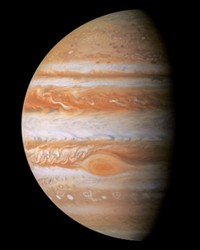Advertisement
Grab your lab coat. Let's get started
Welcome!
Welcome!
Create an account below to get 6 C&EN articles per month, receive newsletters and more - all free.
It seems this is your first time logging in online. Please enter the following information to continue.
As an ACS member you automatically get access to this site. All we need is few more details to create your reading experience.
Not you? Sign in with a different account.
Not you? Sign in with a different account.
ERROR 1
ERROR 1
ERROR 2
ERROR 2
ERROR 2
ERROR 2
ERROR 2
Password and Confirm password must match.
If you have an ACS member number, please enter it here so we can link this account to your membership. (optional)
ERROR 2
ACS values your privacy. By submitting your information, you are gaining access to C&EN and subscribing to our weekly newsletter. We use the information you provide to make your reading experience better, and we will never sell your data to third party members.
Geochemistry
Ancient crystals provide clues about early Earth’s geology
Isotope analysis of zircon crystals suggests plate tectonics started around 3.8 billion years ago
by Katherine Bourzac
April 29, 2022

Analysis of recently discovered zircon crystals reveals a sharp change in Earth’s geochemistry around 3.8 billion years ago. Researchers studying the ancient crystals say the likely explanation is the onset of plate tectonics (AGU Adv. 2022, DOI: 10.1029/2021AV000520).
Earth is the only planet in the solar system that experiences plate tectonics, which causes earthquakes and volcanoes and influences atmospheric chemistry and climate. “The Earth today is so dynamic,” says Nadja Drabon, a geologist at Harvard University who led the research. Some believe this dynamism started less than a billion years ago; others suspect that early Earth was much like the planet of today.
The top layer of today’s Earth is made up of plates that move around slowly on underlying molten mantle. As the plates move over one another, the planet’s crust gets broken up, pulled back down into the mantle, and recycled. Through this process, plate tectonics itself has destroyed most of the physical evidence from about 4 billion years ago and older.
What little evidence remains includes rare zircon crystals around 4 billion years old. Drabon’s team recently discovered some zircon crystals that are 3.3 billion to 4.1 billion years old in the Green Sandstone Bed in South Africa (Geology 2018, DOI: 10.1130/G45276.1).
Isotopic analysis of these crystals, looking at oxygen and hafnium (which can substitute for zirconium in the crystal), gave geologists insights into the conditions under which the crystals formed, such as whether they come from freshly churned or long-lived planetary crust. Zircon cyrstals from the South African deposit that are about 3.8 billion years old resemble those formed today in subduction zones, where one plate is pulled under another. Older crystals from South Africa and another site in Western Australia lack those characteristic signatures. Drabon says this is a likely sign that plate tectonic activity started around that time.
Drabon says her team will continue to test their hypothesis that the crystals were formed by subduction, in part by studying other minerals included in the zircon crystals for further clues about the pressure and temperature under which they were formed.





Join the conversation
Contact the reporter
Submit a Letter to the Editor for publication
Engage with us on Twitter